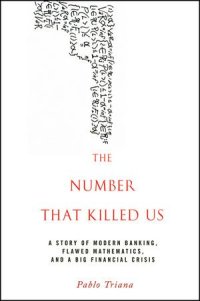"A critical look at the risk measurement tool that has repeatedly, and severely, hurt the financial world. The credit crisis that erupted in 2007 is by no means the only shock to have shaken the financial markets throughout the years. But these market tribulations seem to wreak more havoc than ever before. Author Pablo Triana, as well as other experts in the financial field, think that a specific number is to blame. As it turns out, the very number financial institutions and regulators use to measure risk (Vale at Risk/VaR) has masked it, allowing firms to leverage up their speculative bets to unimaginable levels. VaR sanctioned and allowed the monstrously geared toxic punts that sank Wall Street, and the world, during the latest crisis. We can confidently say that VaR was the culprit. In 'The Number That Killed Us', derivatives expert Pablo Triana takes you through the development of VaR and shows how its inevitable structural flaws allowed banks to take on even greater risks to their never-ending delight. The precise role of VaR in igniting the credit crisis is thoroughly covered, including in-depth analysis of how and why regulators, by falling in love with the tool, condemned us to chaos. Uncritically embraced worldwide for way too long, VaR is, in the face of such destruction, just starting to be examined as problematic, and in this book Triana (long an open critic of the tool's role in encouraging malaise) uncovers exactly why it makes our financial world a more dangerous place. If we care for our safety, we should let VaR go. Contains controversial analysis of the hotly debated risk metric Value at Risk (VaR) and its central role in the credit crisis. Denounces the role of regulators and academics in forcing the presence of the inevitably malfunctioning in financeland. Describes how bonus-hungry traders can use VaR as an alibi to take on the most reckless of bets. Reveals how the most recent financial crisis will simply repeat itself if the problems behind VaR are not unmasked. Pablo Triana is also the author of 'Lecturing Birds on Flying.' The very risk measurement tool that was intended to contain risk allowed financial firms to blindly take on more. The Number That Killed Us reveals how this has happened and what needs to be done to correct the situation"-- �Read more...
Abstract: A critical look at the risk measurement tool that has repeatedly, and severely, hurt the financial world The credit crisis that erupted in 2007 is by no means the only shock to have shaken the financial markets throughout the years. But these market tribulations seem to wreak more havoc than ever before. �Read more...
Download the book The number that killed us : a story of modern banking, flawed mathematics, and a big financial crisis for free or read online
Continue reading on any device:


